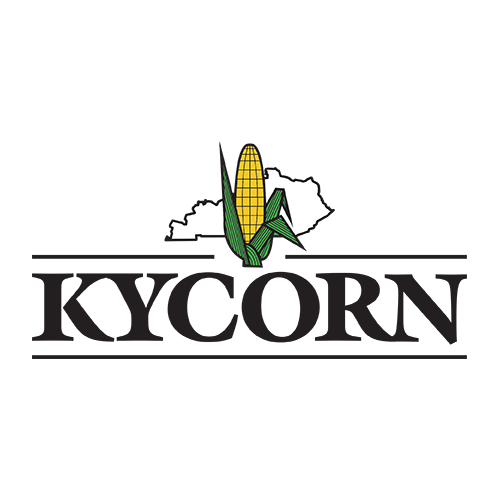Kentucky Corn Growers Association
A small group of energized grain farmers first met in the summer of 1982 at the University of Kentucky field day in Princeton to discuss how they could create more opportunities for corn growers like themselves. These were the days of 21 percent interest, little on-farm storage, and the need for a quick sale.
This group of visionaries included Dr. Morris Bitzer, Jim Barton, Kenneth Hayden, Billy Allen, Gene Shouse, John Barnett, and Earl Welborn.
It did not take long to rally the troops, and the first Kentucky Corn Growers Association annual membership meeting took place in the winter of 1984 in Franklin, Ky. There were about 150 farmers who traveled through dense fog to attend.
They worked to get the most out of their small budget—made up of only membership dues—and focused spending on small promotion programs and production research. The ability to have a dramatic impact on corn grower profitability came with the passage of the Kentucky Corn Checkoff Referendum in 1990.
The Kentucky Corn Fund Utilization Committee was appointed shortly thereafter to manage the allocation of checkoff income. The committee, which was eventually renamed Kentucky Corn Promotion Council, was appointed by the KyCGA Board of Directors (4 members), the Kentucky Farm Bureau (2 members) and the Kentucky Department of Agriculture (1 member).
Early funding projects included an advertising and marketing campaign promoting ethanol, funding for National Corn Growers Association and U.S. Grains Council programs, Kentucky Agriculture & Environment in the Classroom, and a coal desulfurization project which utilized ethanol.
Market development, research, education, and promotions continue to drive current funding.
A few of their project highlights include:
Funded the Corn Quality Testing Lab at the University of Kentucky. The lab gave growers access to quality characteristic information for better marketing.
Encouraged the Commonwealth of Kentucky to purchase more than 1,000 Flex Fuel Vehicles for their fleet which would utilize E85 fuel (85% ethanol, 15% gasoline). KyCorn then worked with retailers to install E85 fueling stations around the state.
Invested $1 Million in Commonwealth Agri-Energy, which created a market for 12 million bushels of corn annually. The Hopkinsville ethanol plant now utilizes more than 16 million bushels of corn annually to produce 45-48 million gallons of ethanol, as well as distiller’s dried grains and corn oil for livestock feed.
Continues to work with the US Grains Council, US Meat Export Federation, and USA Poultry and Egg Export Council to grow corn and corn product exports.
Invested in two substantial livestock feeding projects to utilize byproducts and increase profitability.
Worked with distillers and the Kentucky Department of Agriculture to increase the use of local corn for bourbon production.
Continues to invest in production research and producer education programs including the CORE Farmer Program, the Kentucky Agricultural Leadership Program, and the Grain and Forage Center of Excellence.
Continues to invest in consumer corn and ethanol education programs. Partners include and have included the Kentucky Agriculture and Environment in the Classroom, NASCAR, Crappie Masters, American Chopper, CommonGround, the US Farmers and Ranchers Alliance, and the Corn Farmers Coalition.
Invested in Commonwealth Agri-Energy, the ethanol production plant in Hopkinsvile, KY.
On the membership side of the organization, Kentucky Corn works to be the voice of growers on policy issues in Frankfort and Washington, D.C. The organization is also involved in several regulatory programs such as water quality, conservation, and biofuel utilization.

